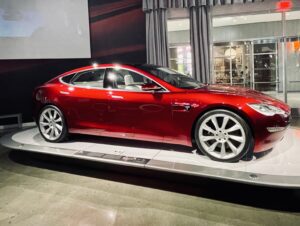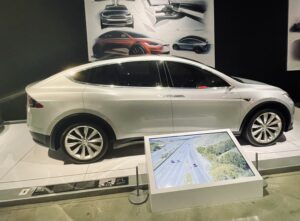 The story behind Tesla Model X
The story behind Tesla Model X
The Model X is a groundbreaking SUV that has made waves in the automotive industry. In 2013, Tesla set an ambitious production target of 20,000 Model X cars. They had high hopes for high-volume production by 2015, with deliveries scheduled to begin in early 2014. However, delays plagued the project, and it was in September 2015 that Tesla finally started delivering the Model X. The main culprits behind the delays were the falcon-wing doors and motor cooling. Tesla pointed fingers at a Swiss hydraulics firm called Hoerbiger Holding for the issues with the falcon-wing doors. They claimed the doors did not meet their standards, citing oil leakage and overheating. In response, Tesla filed a lawsuit against Hoerbiger, which was eventually settled in 2016.
During this time, Tesla introduced the 60D version of the Model X, offering a more affordable option for consumers. With a range of 320 km, an acceleration rate of 0 to 97 km/h in 6 seconds, and a top speed of 210 km/h, the 60D was a popular choice. Owners can upgrade to a 75D range, increasing the battery capacity from 60 kWh to 75 kWh. By August 2016, Tesla had sold over 10,000 Model X units worldwide, with the majority of sales in the United States.
Improvement and Innovation
This was also when Tesla unveiled the P100D with Ludicrous Mode, establishing it as the top version of the Model X. With a 100 kWh battery, an acceleration rate of 0 to 97 km/h in 2.9 seconds, and a range of 465 km, the P100D was a force to be reckoned with. As the Model X lineup evolved, Tesla discontinued the 60D version and made the “Smart Air Suspension” standard, resulting in a higher base price. Over the years, Tesla continued to innovate and improve the Model X. In early 2019, the 75D version was discontinued, making the 100D the base version of the Model X. Later that year, Tesla introduced the Long-Range model, offering a 325-mile EPA range of around $84,000. And in 2020, Tesla further increased the Model X’s range, with the Long-Range Plus model boasting an impressive 371-mile range.
The design and specifications of the Model X
The panoramic windshield and safety-focused design make it one of the safest SUVs. With Autopilot and a radar-based Autonomous Emergency Braking system, the Model X prioritizes safety. And let’s not forget about those iconic falcon-wing doors, which add a touch of style and improve accessibility. Inside, the Model X offers seating for seven adults and ample cargo space of around 87 ft³. The vehicle’s weight is slightly heavier than the Model S, but it shares about 30% of its parts with its sibling. The Model X has various battery pack options, from 60 kWh to 100 kWh, delivering impressive performance. With two motors powering the front and rear wheels, the Model X’s all-wheel-drive system is a force to be reckoned with.
Tesla Model X Safety
Regarding safety, the Model X has received top ratings from the National Highway Traffic Safety Administration and Euro NCAP, thanks to its safety-focused design and low center of gravity. The Tesla Model X has captured the hearts of many with its innovative design, impressive range, and commitment to safety. It continues to be a leader in the electric SUV market, redefining what is possible in automotive technology.
